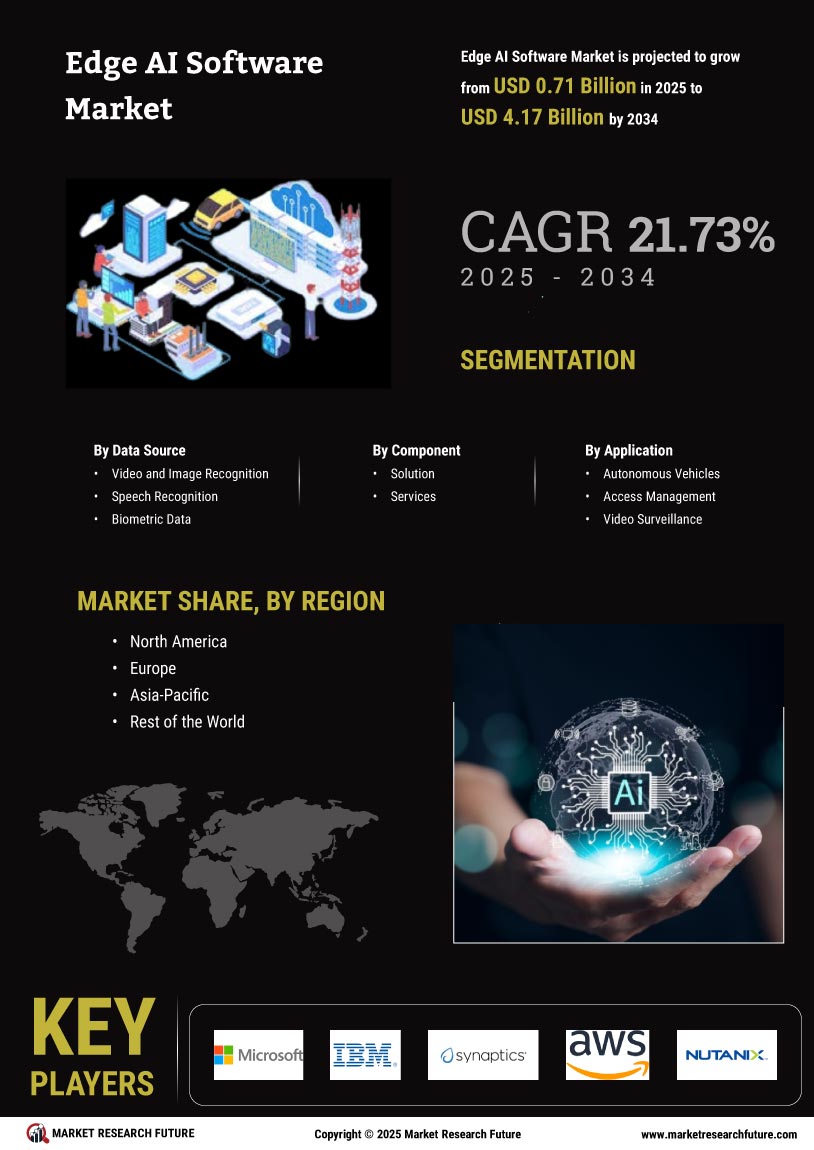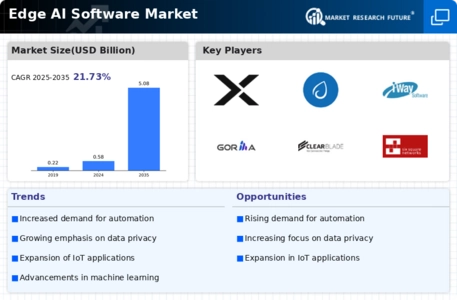Leading market players are investing heavily in research and development to expand their product lines, which will help the Edge AI Software Market grow even more. Market participants are also undertaking various strategic activities to expand their global footprint, with important market developments including new product launches, contractual agreements, mergers and acquisitions, higher investments, and collaboration with other organizations. To expand and survive in a more competitive and rising market climate, Edge AI Software industry must offer cost-effective items.
Manufacturing locally to minimize operational costs is one of the key business tactics used by manufacturers in the global Edge AI Software industry to benefit clients and increase the market sector. In recent years, the Edge AI Software industry has offered some of the most significant technological development.
Major players in the Edge AI Software Market, including Microsoft Corporation (US), IBM Corporation (US), Amazon Web Services (US), Nutanix Inc. (US), Synaptics (US), TIBCO Software (US), Octonion SA (Switzerland), Intel Corporation (US), HPE (US), Oracle Corporation (US), Foghorn Systems (US), Gorilla TechnologyGroup (Taiwan), Azion Technologies (US), ClearBlade (US), TACT.Ai Technologies (US), SIXSQ (Geneva), ADAPDIX (US), and others are attempting to increase market demand by investing in research and development operations.
International Business Machines Corporation (IBM) is a Fortune 500 company with operations in more than 175 countries worldwide and is headquartered in Armonk, New York. Hosting and consulting services are also offered in addition to the company's primary focus on computer hardware, middleware, and software for everything from mainframes to nanotechnology. IBM is a company that offers various IT products and services. The firm develops and distributes its hardware and software, providing related services, including hosting and consulting.
In March 2023, IBM announced that BESTSELLER India, a subsidiary of BESTSELLER based in India, will be working with IBM Consulting to implement critical transformation initiatives to help create an intelligent and autonomous fashion landscape quickly accelerate business growth.
Adapdix provides Autonomous Systems that quicken the process of going digital. Adapdix technology has been demonstrated to provide AI-enabled performance improvements with market-leading speed and value, as seen by the company's expanding portfolio of Fortune 500 customers. Adapdix is a startup that has called the San Francisco Bay Area home since its inception in 2015. In June 2022, Adapdix acquired Edge Intelligence, the first globally distributed data management platform for analytics built for edge computing and hybrid cloud environments, to further solidify its position as the market leader in AI-powered automation software.

















Leave a Comment